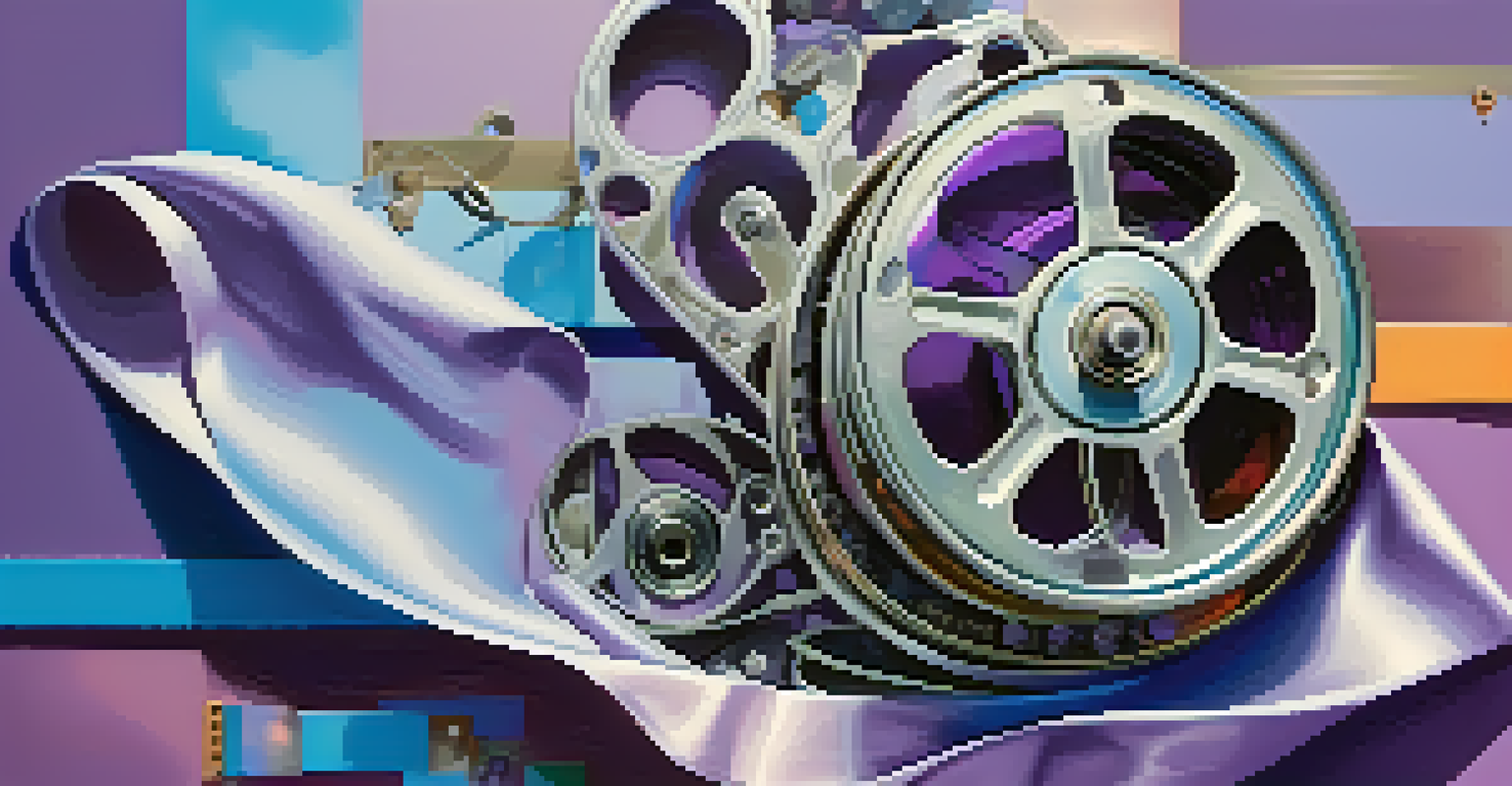Directorial Vision: Balancing Art and Commercial Success

Understanding Directorial Vision in Film
Directorial vision refers to the unique perspective and artistic intent a director brings to a film. This vision encompasses everything from storytelling choices to visual style and character development. A strong directorial vision can elevate a film, making it not just a product, but a piece of art that resonates with audiences.
The director is the chief storyteller of a movie, and the vision is the heart and soul of the film.
For example, consider Quentin Tarantino's films, which are known for their distinct narrative style and visual flair. His ability to blend genres and create memorable characters demonstrates how a director's personal touch can shape a film's identity. This level of artistry often leads to critical acclaim, but it also comes with commercial challenges.
Ultimately, understanding directorial vision is crucial for both filmmakers and audiences. It allows viewers to appreciate the deeper layers of a film while reminding creators of the importance of staying true to their artistic instincts.
The Art vs. Commerce Dilemma
The struggle between artistic integrity and commercial viability is a common theme in filmmaking. Directors often find themselves at a crossroads, needing to decide whether to prioritize their creative vision or cater to audience expectations and market trends. This dilemma can create tension, especially in projects with significant financial backing.

Take the case of Christopher Nolan, known for his ambitious storytelling and complex narratives. While his films often push the boundaries of traditional cinema, they also attract substantial box office success. This balance showcases that it is possible to create art that resonates commercially, but not without careful navigation.
Directorial Vision Shapes Film Identity
A director's unique perspective and artistic intent significantly influence a film's storytelling and visual style.
Ultimately, the art versus commerce debate challenges directors to find innovative ways to engage audiences while remaining true to their vision. This balancing act is essential for both the artistic and financial success of a film.
Audience Expectations and Creative Freedom
Audience expectations can significantly influence a director's creative choices. Fans often have preconceived notions about what they want from a film based on trailers, marketing materials, or previous installments in a franchise. This can create pressure to conform to popular trends or familiar formulas.
You have to be willing to risk everything to create something special.
For instance, in the superhero genre, directors frequently face the challenge of meeting fan demands while injecting their unique style. If a film diverges too much from what audiences expect, it risks backlash, as seen with some divisive adaptations. However, successful directors often find ways to surprise and delight viewers without sacrificing their vision.
Navigating audience expectations requires a delicate balance—directors must listen to their audience while also trusting their instincts. This dynamic relationship can enrich the filmmaking process, resulting in a final product that satisfies both the artist and the viewers.
The Role of Producers in Balancing Vision
Producers play a pivotal role in the filmmaking process, often acting as a bridge between the director's vision and the commercial aspects of a project. They help secure funding, manage budgets, and coordinate schedules, all while keeping an eye on market trends and audience demographics. This dual focus can help directors stay grounded in the realities of film production.
Consider the collaboration between producer and director in films like 'The Lord of the Rings.' Producer Fran Walsh worked closely with director Peter Jackson to maintain the essence of J.R.R. Tolkien's world while ensuring the films appealed to a broad audience. This partnership exemplifies how producers can help directors navigate the delicate balance between art and commerce.
Balancing Art and Commerce is Crucial
Directors must navigate the tension between maintaining their creative vision and meeting audience expectations to achieve success.
Ultimately, a strong producer-director relationship can foster an environment where creative vision thrives alongside commercial objectives. This synergy is essential for bringing ambitious projects to life while maintaining artistic integrity.
The Impact of Distribution Strategies
Distribution strategies play a significant role in determining a film's success in both artistic and commercial terms. How and where a film is released can greatly influence audience reception and box office performance. With the rise of streaming platforms, directors now have more options than ever when it comes to distribution.
For example, films like 'Roma' and 'The Irishman' found success on Netflix, showcasing that alternative distribution methods can reach wider audiences while preserving creative vision. By bypassing traditional theatrical releases, directors can explore unconventional narratives without the same financial pressures.
As distribution continues to evolve, directors must adapt their strategies to ensure their artistic messages resonate with viewers. This ongoing shift highlights the importance of understanding the changing landscape of film distribution in achieving both artistic and commercial success.
Risk-Taking: A Key to Creative Success
Risk-taking is often a hallmark of great filmmaking, allowing directors to push boundaries and explore new ideas. While taking creative risks can be daunting, it often leads to innovative storytelling and a fresh perspective that captivates audiences. This willingness to experiment is essential for artists looking to leave a lasting impact.
Directors like Greta Gerwig have embraced risk-taking by tackling complex themes and diverse narratives. Her film 'Lady Bird' broke traditional coming-of-age molds, resonating with audiences and earning critical acclaim. Such bold choices can redefine genres and inspire future filmmakers to take similar leaps.
Risk-Taking Drives Innovative Storytelling
Embracing creative risks often leads to groundbreaking narratives that resonate deeply with audiences and redefine genres.
However, it is vital for directors to weigh the potential rewards against the risks. While some experimental films might not achieve commercial success, they can contribute to a director's legacy and influence the industry. This delicate dance between risk and reward is integral to navigating the landscape of filmmaking.
Finding Personal Fulfillment in Filmmaking
For many directors, filmmaking is more than just a career; it is a means of self-expression and personal fulfillment. The creative process allows them to explore their passions, tackle meaningful themes, and connect with audiences on a deeper level. This intrinsic motivation can drive directors to pursue their vision, even in the face of commercial pressures.
Take the example of Bong Joon-ho, whose films often delve into social issues and human experiences. His ability to weave personal narratives into broader themes has garnered both critical acclaim and box office success. This illustrates how personal fulfillment can coexist with commercial viability.

Ultimately, finding personal fulfillment in filmmaking is essential for directors to maintain their passion and creativity. By staying true to their vision, they can create films that resonate not only with audiences but also with their own artistic journey.